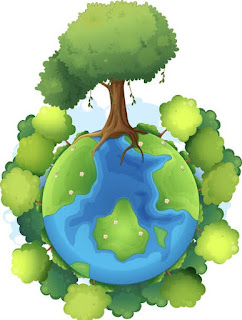Hand eczema, also known as hand dermatitis, is a common condition that affects about 10% of the U.S. population. Both genetics and contact allergens and irritating substances play a role in “triggering” this form of eczema. It often affects people who work in cleaning, catering, hairdressing, healthcare and mechanical jobs where they may come into contact with chemicals and other irritants.
Hand eczema isn’t contagious. You cannot “catch” it from another person, or give it to someone else. Even so, the symptoms of hand eczema can impact a person’s self-esteem and their ability to perform on the job.
What does hand eczema look like?
All types of eczema cause itching and redness of the skin. But some, like hand eczema, look and act slightly different than others.
Some symptoms of hand eczema:
1. Redness
2. Itching
3. Pain
4. Dryness, to the point of peeling and flaking
5. Cracks
6. Blisters
There is another specific type of hand eczema called pompholyx or dyshidrotic eczema, which causes small, itchy blisters to appear on the palms of the hands. Dyshidrotic eczema tends to affect women more than men. If you think that you might have dyshidrotic eczema, make an appointment with your doctor.
Treatment for hand eczema:
Knowing which substances trigger your hand eczema and protecting your hands at home and at work, can help guard your skin against further irritation. The most important thing to remember is to be consistent — a daily routine for care and control is the best defense.
If you believe that a substance at home or at work is causing your hand eczema, your doctor can do a “patch test” to see which allergens or irritants may be the problem. Your doctor can also help pinpoint behaviors or practices that may be contributing to your hand eczema and help you find ways to modify or avoid them.
SOME BASIC THINGS YOU CAN DO AT HOME TO HELP CONTROL YOUR HAND ECZEMA:
If you need to clean your hands, wash them with lukewarm (not hot) water and fragrance-free cleanser.
Gently blot hands dry, and apply a moisturizer immediately after you wash your hands.
The most effective moisturizers are the ones with a higher oil content (like ointments and creams). Keep one near every sink in your home, so you don’t forget to apply it after washing your hands. Check out NEA’s Seal of Acceptance Product Guide for recommendations on safe and effective moisturizers.
If sanitizing your hands isn’t necessary, try a waterless hand washing method: use the same cleanser, but without any water and then gently blot off any excess cleanser when you’re done.
Avoid waterless, antibacterial cleansers, which often contain ingredients like alcohol and solvents that are very hard on your hands (especially during flare-ups).
Keep cotton gloves around the house to protect your hands while you do chores, like folding the laundry. When the gloves become dirty, be sure to wash them using fragrance-free, dye-free detergent.
If your fingertips aren’t affected by eczema, you can cut the tips off of your cotton gloves so that they’re more comfortable to wear in warm weather.
Use a combination of vinyl gloves and cotton liners when doing work that involves getting your hands wet. Afterward, be sure to wash your gloves inside out, and let them air dry. If water gets into your glove, take it off immediately, blot hands dry and replace with a new glove.
If you’re doing work with foods like potatoes, onions, peppers, meat, or acidic fruits (like tomatoes, or citrus), use disposable gloves that you can throw away once you’re finished.
Ask someone else to shampoo your hair, or shampoo it yourself while wearing protective gloves (waterproof vinyl with cotton liners). Use rubber bands around your forearms to help keep water from rolling down your arm, and into your gloves.
Remove rings from your fingers while doing housework and before washing and drying your hands, as irritants can get trapped beneath. Clean your rings often.
Do not wash dishes or clothes by hand. Instead, use a dishwasher and washing machine. If you can’t avoid washing by hand, do so under running water and use a long-handled scrubber to prevent hot water from damaging your skin.
Once your eczema clears, your doctor may want you to use petroleum jelly on your hands, overnight, with gloves. Use the same gloves over and over, so that they continue to absorb the product and lock moisture in while you wear them.
SOME BASIC THINGS YOU CAN DO AT WORK TO HELP CONTROL YOUR HAND ECZEMA:
Avoid allergens or irritating substances in products you use on the job — like industrial hand cleansers or waterless, antibacterial cleansers that may trigger your hand eczema, or make it worse. These often contain ingredients like alcohol and solvents, that are very hard on your hands, especially during flare-ups.
Protect your hands at work with a combination of heavy-duty vinyl or neoprene gloves and cotton glove liners. Regularly wash cotton liners and vinyl gloves if they aren’t disposable.
Always carry your own hand cleanser, moisturizer and medication with you, wherever you go.
Keep your clothes, protective gear, tools and work surfaces clean and free of residue from irritating substances.
Treat wounds on your hands (even minor ones) and bandage them in order to avoid irritation from allergens or chemical substances.
Your doctor may also prescribe a barrier repair cream, or topical steroid to help speed up healing.











No comments:
Post a Comment